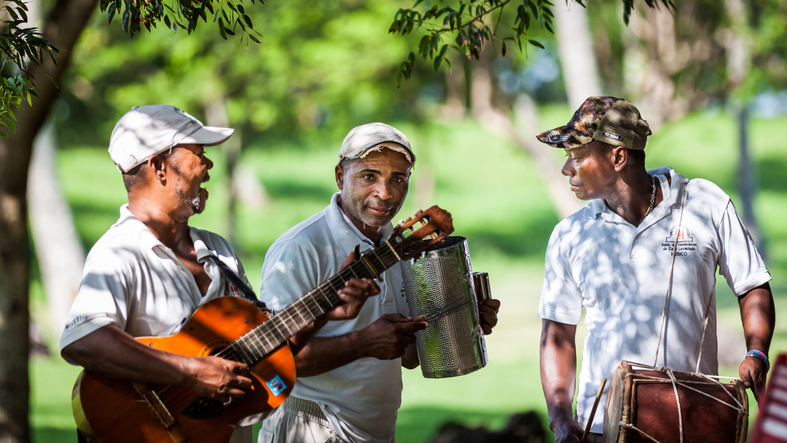The Dominican Republic is one of the most valued beautiful destinations in the world. Its beaches, the Caribbean climate, the food and culture have made the country and its capital, Santo Domingo, a safe bet for travellers.
On the occasion of the National Merengue Day, on 26th of November, the Dominican people show the world their pride in merengue. A dance and music that was began in the mid-nineteenth century and today exports the Dominica Republic brand all over the world.
Merengue is danced to, heard and played in the streets. A dance with Dominican blood that represents the spirit of its people more than any other symbol. Joy, colour and fun invite tourists to stay and savour its charms, dance with a partner and let the rhythm of the güira (grater) and the tambora (a two-headed drum) move their hips.
To the rhythm of merengue
Merengue is present on every street corner in the Dominican Republic. The frenetic tempo of the music typically involves four beats or steps per complete turn. Melodies are cheerful, combining the percussion of the tambora and the güira with the musical speed of the accordion and the sound of the wind and brass instruments take care of the high notes.
It was originally played with stringed instruments, and this was something that prevented the democratisation of the genre in popular culture, and at a national level in the Dominican middle class. With the introduction of accordion, the musical genre became more widely accepted by the upper classes, creating an identity that has remained from that time to the present day.
To the rhythm of merengue
As for the dance, it was Luis Alberti and Antonio Moreli who gave merengue a greater urban appearance and took it to high society ballrooms. Alberti brought the saxophone in the 1950s to create jazz-influenced merengue, and the music’s success has continued to this day. Merengue is danced in an open or closed embrace and is one of the simplest Latin dances to learn, albeit with a very strong tradition and technique in its movements.
Today, Juan Luis Guerra is undoubtedly the greatest international merengue superstar and one of the figures who has contributed decisively to spreading the meringue sound worldwide. Dominicans are very proud of this musician who was born in Santo Domingo.
Most hotels in the country offer their guests merengue classes and parties and events to practice their dance moves and see how they’re improving. Learning to dance merengue is one of the main challenges for many people visiting the Dominican Republic.
If there’s one province that has boosted merengue tourism, it has to be Puerto Plata. Since it opened in 2016, The city’s La Puntilla Amphitheatre has hosted some of the top names in Dominican merengue, including Sergio Vargas, Johnny Ventura and Wilfrido Vargas.
Visit the Dominican Republic in 2019 and discover merengue to the beat of its flavour, sounds and culture!







